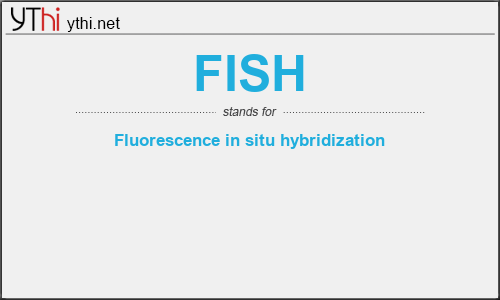What does FISH mean? What is the full form of FISH?
The Full Form of FISH is Fluorescence in situ hybridization.
Fluorescence in situ hybridization (FISH) is a laboratory technique for detecting and locating a specific DNA sequence on a chromosome. The technique relies on exposing chromosomes to a small DNA sequence called a probe that has a fluorescent molecule attached to it. The probe sequence binds to its corresponding sequence on the chromosome.
One method for localizing a piece of DNA within a genome is called fluorescence in situ hybridization, abbreviated FISH. In this approach, a fluorescent dye is attached to a purified piece of DNA, and then that DNA is incubated with the full set of chromosomes from the originating genome, which have been attached to a glass microscope slide. The fluorescently labeled DNA finds its matching segment on one of the chromosomes, where it sticks. By looking at the chromosomes under a microscope, a researcher can find the region where the DNA is bound because of the fluorescent dye attached to it. This information thus reveals the location of that piece of DNA in the starting genome.
FISH
means
Fluorescence in situ hybridization![]()
Translate Fluorescence in situ hybridization to other language.


Leave a Reply
You must be logged in to post a comment.